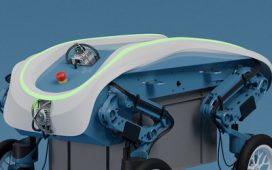“An artist is an ordinary person who can take ordinary things and make them special,” reads a quote from Japanese American modernist artist Ruth Asawa at the entry corridor to her first posthumous retrospective, on view through September 2 at the San Francisco Museum of Modern Art (SFMOMA). Organized in 12 galleries that unfold in loose chronological progression over six decades, Ruth Asawa: Retrospective features over 300 works, including her signature hanging looped-wire sculptures, as well as lesser-known creations, like her 1940s paintings and drawings of flowers from the ’90s and early 2000s.
Asawa was born in 1926 to Japanese immigrant parents and raised on a farm in Norwalk, California. As a teenager, she and her family were separated and displaced in 1942, unjustly relocated to incarceration camps as a result of the U.S. government’s Executive Order 9066 during World War II. After the war ended, Asawa traveled to rural North Carolina and enrolled in the experimental Black Mountain College (BMC), where from 1946 to 1949 she studied under teachers including Josef Albers, Buckminster Fuller, and Max Dehn. “Each instructor was a practicing artist, dancer, musician, or mathematician, who understood his craft by doing it,” Asawa once said of her time at BMC.
Inspired by dance classes Asawa took with Merce Cunningham at Black Mountain College, the Dancers motif seen above (oil on paper, 1948-49) is one of several abstractions of dancing figures Asawa produced, highlighting her exploration of physical motion. The interlocking forms hint at her development of nesting and layering techniques in future sculptural work.
Her diverse coursework in art and design—as well as mathematics and dance—inspired her early drawings, paintings, and wire work, but it was a foundational 1947 trip to Toluca, Mexico, that exposed Asawa to basket weaving with wire, a key inflection point that would critically influence the looped-wire technique that characterized her forthcoming sculptural work. The gallery encompassing Asawa’s time at BMC showcases works dominated by bold colors and patterns, a reflection of her studies in color theory and her early experimentations with biomorphic forms that marked this period. It was also during this formative era that Asawa met her future husband, architect Albert Lanier. In one corner, a postmarked envelope from Lanier addressed to Asawa at “B.M.C.” is displayed with the 1948 painting she made using the stamp colors.
In 1949, Asawa joined Lanier in San Francisco, and the city became their adopted hometown. It was there during the 1950s that Asawa honed her hanging looped-wire sculptures with her “form within a form” nesting technique and interlocking lobes. In an expansive gallery dedicated to these abstract wire forms, sculptures of varying sizes hang individually and in groupings, creating shadows on the white gallery walls almost as intricate as the sculptures themselves.
Asawa and Lanier had six children between 1950 and 1959, and the family moved to a cedar-shingled Arts and Crafts–style home in Noe Valley (where the couple lived for the rest of their lives). Although they renovated the home to incorporate a separate art studio, Asawa preferred to work in the living room—taking advantage of the double-height ceilings to suspend her wire sculptures from the rafters above. “I’ve always had my studio in the house,” Asawa said, “because I wanted my children to understand what I do and I wanted to be there if they needed me—or a peanut butter sandwich.”
A gallery with wood-paneled walls—a departure from the white walls of the surrounding spaces—represents the Asawa-Lanier residence, with the size and scale of the space akin to their original Noe Valley living room. The exhibition includes the redwood doors formerly installed at the home’s entrance, hand-carved in 1961 by Asawa and family members. Wire sculptures are suspended from the ceiling just as they were in Asawa’s cathedral-like living room. Exhibition visitors are invited to pull up a chair and imagine the home as it looked as Asawa worked and raised her family there.
Rough sketches of bananas and tomatoes—many of them on display in original spiral notebooks—and watercolor drawings of eggplants, cherries, chrysanthemums, and calla lilies reveal the artist’s love of gardening and are also featured prominently in the Noe Valley gallery. Another gallery hones in on Asawa’s focus on flowers from the 1980s into the early 2000s, with soft watercolors and black-and-white drawings of bouquets given to her by friends and family.
Elsewhere, through video, photographs, maquettes, and archival materials, the exhibition shines a light on Asawa’s public artworks in the Bay Area from the 1960s onward, as well as her fierce advocacy for integrating art into San Francisco’s public schools. “It is especially meaningful to debut Asawa’s first national and international retrospective in her adopted home city of San Francisco,” says Janet Bishop, Thomas Weisel Family chief curator at SFMOMA, who co-curated the exhibition with Cara Manes of MoMA, New York (where the touring exhibition will head this fall). “She left her mark all over the city in the form of her public works.”
Walking through Ruth Asawa: Retrospective, room after room, shines a light on the rich variety of Asawa’s oeuvre. “Asawa was always making, always learning through doing,” says Bishop. “By representing the full breadth and depth of her practice, we’re hoping visitors will see for themselves how inventive she was across two and three dimensions, at a range of scales, and in a wide variety of materials.”
Top image: Ruth Asawa and her granddaughter in front of her Japanese American Internment Memorial, 1990-94, commissioned by the City of San José; ©2025 Ruth Asawa Lanier, Inc., courtesy David Zwirner; photo: Laurence Cuneo















